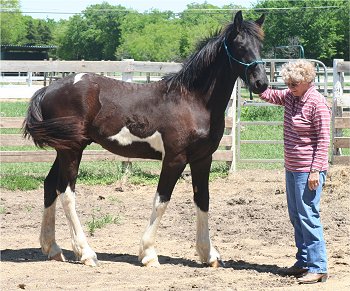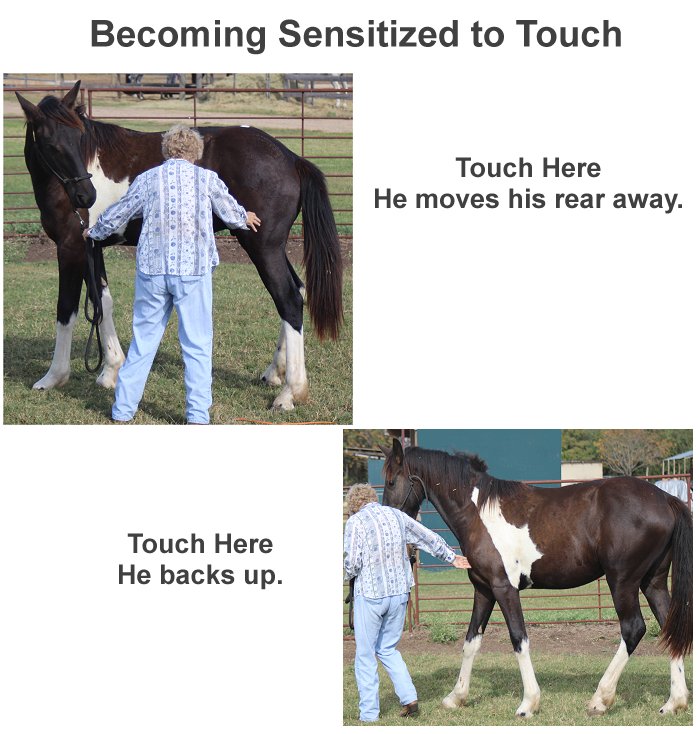 Disengaging is a fancy way of saying that you want your horse to move away from you with the slightest touch. Teaching him (on the ground) how to disengage his rear, disengage his front, and back up prepares him for many, many more maneuvers further in his training program.
Disengaging is a fancy way of saying that you want your horse to move away from you with the slightest touch. Teaching him (on the ground) how to disengage his rear, disengage his front, and back up prepares him for many, many more maneuvers further in his training program.
We spent quite a bit of time DE-Sensitizing him. He is not afraid of your rope your stick, your hat, or a plastic bag. But, he is not easy to move in any direction when you want him to. We want him to know that when we touch him insistently anywhere on his body, he should give to the pressure and move away from our push.
Disengaging starts with SENSITIZING.

Backing up is important to keep him out of your space.
The rear disengage is important to keep you safe from a dangerous kick. Later we will integrate it into leg cues, a side pass and more. When his rear is away from you, his front is automatically facing you so that he can pay attention and see your directions.
The front disengage turns him away when he is too close, changes his direction of movement, is the start of a spin and is also used in the introduction of the side pass.
These three exercises are taught early. They are not difficult, and they help to develop a horse’s brain. It is important to connect a horse’s brain to his feet. Horses walk and run instinctively, not deliberately. Until you show him, a horse has probably never thought about his feet being under voluntary control.
I like to teach maneuvers as “dance steps”, which become smoother, easier, and more controlled with practice – until they are automatic and easy. As you can relate with your own dancing, controlling your feet and your posture and your balance during a foreign foot sequence takes practice. So it does with a horse as well.
Remember that any dance routine done well on the ground will be 10 times easier to teach under saddle.
In my career, I have found the front disengage to be more challenging, but your own experience may be different. Horses with different temperaments seem to be more or less reluctant at one end or the other based on their attitudes – and even their breed. Arabs generally move their fronts well. Drafts move their rears more easily.
See Disengage the Front, See Disengage the Rear, See Backing Up
Horse training can be dangerous. Not all methods work on all horses. Instruction presented here is not meant to be prescriptive in nature, and Horse-Pros.com takes no responsibility for the welfare of any animal or person using our methods.
Please note that any advice given on horse-pros.com is neither veterinary nor prescriptive in nature but offered only as an introduction to this topic.
We need your help. We certainly don’t know everything. Please share your expertise and experiences. Comment on what is already written or Suggest a Category and Educate us about it. Grow Horse-Pros.com©